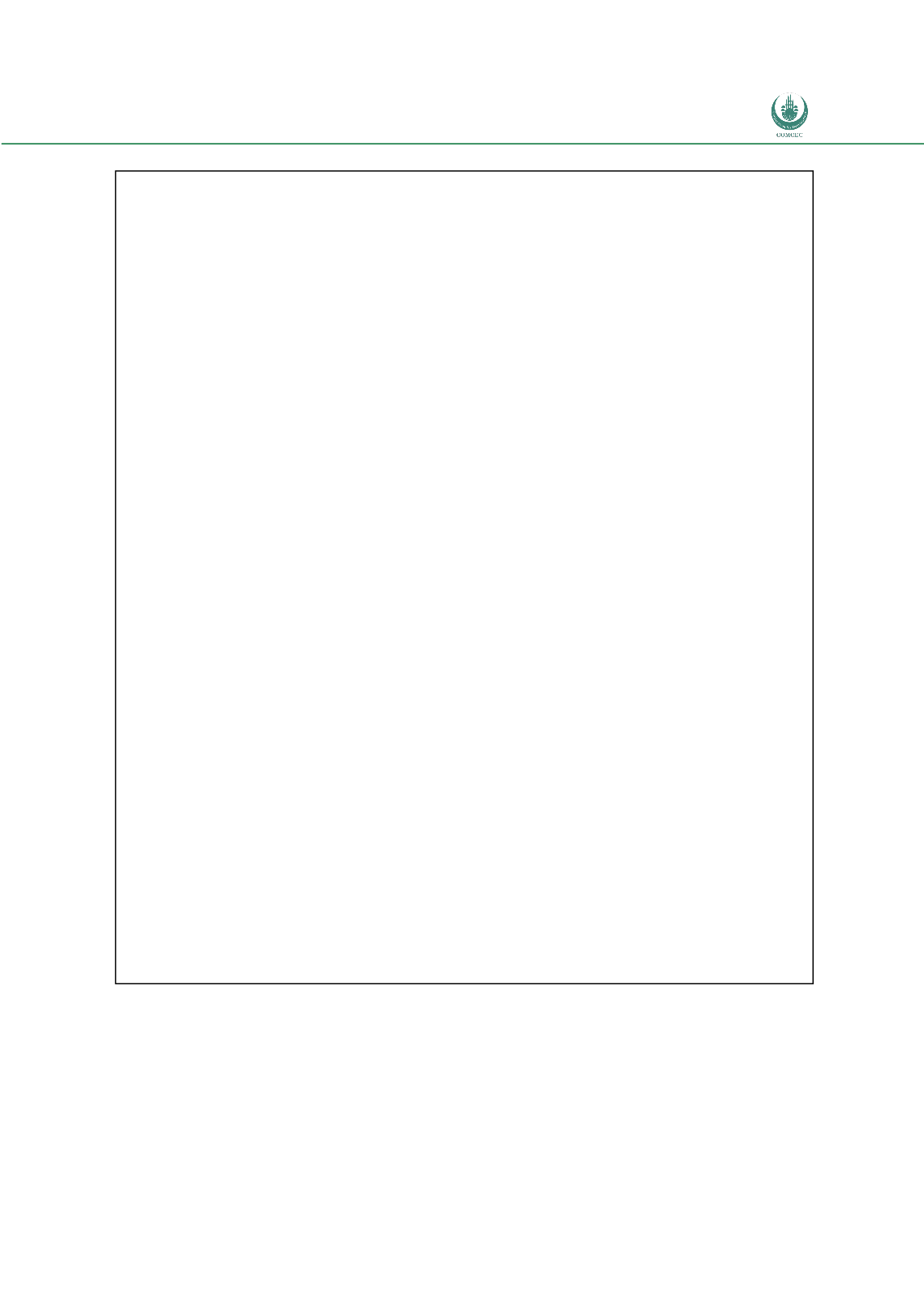

FACILITATING INTRA-OIC TRADE:
Improving the Efficiency of the Customs Procedures in the OIC Member States
69
Some of the Member States are using ASYCUDA as their electronic customs clearance
system, which is developed by UNCTAD. These countries including Bangladesh,
Burkina Faso, Benin, Uganda etc. are using the risk management facility provided by
the ASYCUDA.
“ASYCUDA’s risk management system capitalizes on over 25 years of experience in
the computerization and implementation of Customs operations worldwide. ASYCUDA
Box 7: Implementation of a Risk Management System by Cameroon
As part of its overall reform programme, Cameroon Customs administration introduced Risk
Management System in 2006. The Administration replaced the semi-automated Customs operating
system with ASYCUDA++, which is a fully automated programme. It also purchased a container
scanner for expediting the physical controls.
Since its inception, the System went through three phases. During the first phase, which took
approximately two years, it was used to determine the control of the cargo according to the risk level
(green-yellow-red). In the second phase (next two years), the system also focused on the performance
of the customs officiers through performance monitoring (
Gazing into the Mirror).
This served as a
catalyst for auto-evaluation thereby raising the level of governance and voluntary compliance. Since
2010, the system involves the signing and implementation of performance contracts between top
management and subordinates officers on the one hand, and between Customs and traders on the other
hand. These performance contracts are based on indicators released by the system which enable to
measure the level of compliance, the time taken to process a consignment and other relevant
parameters.
In order to implement the Risk Management System, a Risk Management Unit has been created within
the Customs which is attached to the office of the Director General of Customs. The Risk Management
Unit is responsible for collecting all data and information necessary for the risk analysis.
Cameroon Customs Administration did not need to make too many infrastructure investments for
implementing the Risk Management System. It allocated office space and furnishings; computers,
printers, local network cabling and routing. The system used the software of ASYCUDA++,
ORACLE and, MYSQL.
The total cost of implementing the system reached approximately USD 1 Million up to date. The
initial stages were financed from internal sources (budget of the Customs Administration). The World
Bank also provided funding to develop some of its modules. The programme has been implemented
mostly by the experts from the Customs Administration. World Bank and WCO has also provided
expertise in some cases.
The project team carried out many training, sensitization and information activities with other Customs
officers, traders and the private sector in general. The main purpose of such activities was to get them
to understand the different modules of the system and to overcome the traditional resistance to change.
The risk management system has provided important benefits to the Customs Administration and the
traders. The benefits for the government include increase in revenue, governance and performance
monitoring. For the traders, the system reduced clearance time and cost and increased predictability.
Source: Gasper KONNEH NEBA, Inspector of Customs, 3 October 2011

















